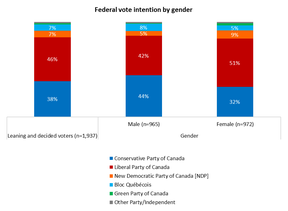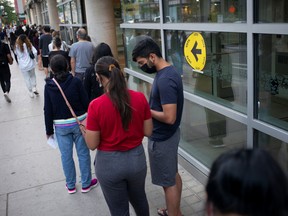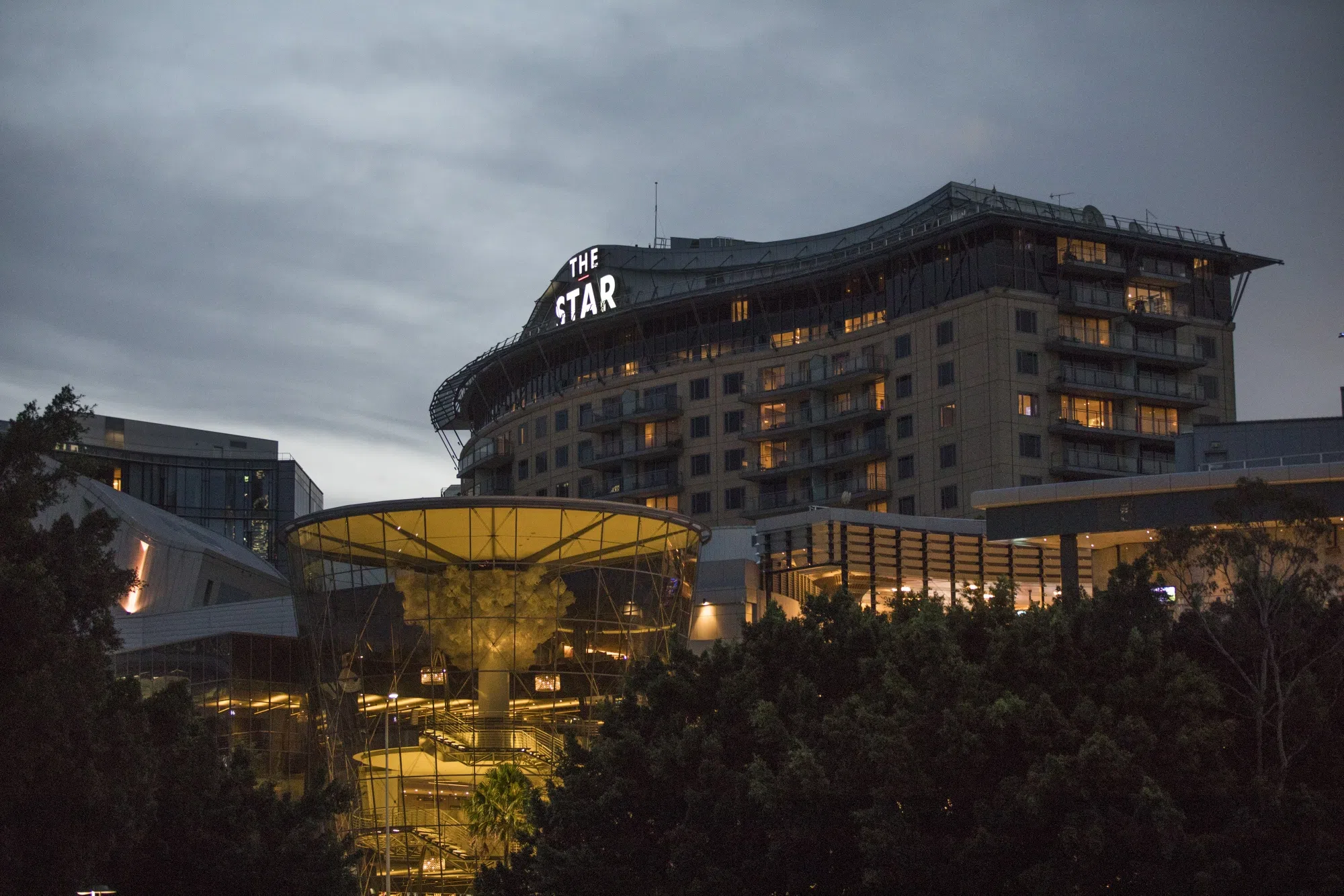If voter turnout ticks up only a bit from its historic lows, it upends projections of how this election will go
Article content
First Reading is a Canadian politics newsletter that throughout the 2025 election will be a daily digest of campaign goings-on, all curated by the National Post’s own Tristin Hopper. To get an early version sent directly to your inbox, sign up here.
Article content
Article content
TOP STORY
One week into the 2025 election, the Liberals under Mark Carney are dominating every typical indicator of electoral success.
Advertisement 2
Article content
Every poll now has the Liberals in the lead; a Sunday release by Liaison Strategies had them with a five-point lead. And even the betting markets have swung hard for the Liberals: A Polymarket wager for “next prime minister of Canada after the election?” is favouring Carney at 66 per cent.
But there’s one overlooked factor that could flip all of this on its head: voter turnout.
In the 2021 federal election, voter turnout was the sixth lowest in Canadian history. Just 62.6 per cent of eligible voters ended up casting a ballot; meaning there were 7.6 million Canadians who could have voted, but chose not to.
If only a relatively small number of those 7.6 million change their mind about voting in the 2025 election, it could upend the usual electoral metrics for how this is supposed to go.
Advertisement 3
Article content
In just the last year, there have been two major national elections that were largely decided by non-voters.
In July, the U.K. saw the Labour Party under Keir Starmer secure victory thanks to a 24-year low in voter turnout. And in the U.S., the opposite happened in November: Donald Trump won a second presidential term due in part to his ability to draw non-voters to the polls.
The U.K. example is particularly notable because the Labour Party received fewer raw ballots than it had in 2019, an election the party had lost to Boris Johnson’s Conservatives. The July election saw Labour pull in 9.7 million votes as compared to the 10.3 million they’d won in the election prior.
But since voter turnout had collapsed even harder for the incumbent U.K. Conservatives, Labour was able to ride its lacklustre results into a commanding majority victory. According to an analysis by the U.K. Parliament, Labour did best in ridings with turnouts of less than 45 per cent.
Article content
Advertisement 4
Article content
“I didn’t even know it was on,” was the view of one apathetic British voter quoted in The Economist.
Recommended from Editorial
The opposite phenomenon has been happening in the U.S., with the controversial candidacy of Trump precipitating some of the highest voter turnout the country has seen since 1900.
In 2024, Trump won not so much because he convinced centrists and Democrats to vote for him, but because he drew voters to the polls who typically sit out presidential elections. At the same time, many voters who had turned out for prior Democratic candidates didn’t bother to vote for Trump’s opponent, Kamala Harris.
Advertisement 5
Article content
As Politico summed up the phenomenon, “turnout helped power Trump’s victory.”
Low-turnout elections, as a rule, generally benefit the incumbent. Challengers fail to rally opposition to the status quo, their supporters stay home, and the existing government wins again by default.
The most notable beneficiary of this phenomenon would be Ontario Premier Doug Ford, who in February secured a rare third consecutive majority government.
Two of Ford’s majorities were won in elections that saw historically low voter turnout. The most recent saw just 45.4 per cent of Ontarians cast a ballot. The one before that, in 2022, had posted the lowest-ever turnout in the province’s history, with just 43.03 per cent of eligible voters casting a ballot.
Advertisement 6
Article content
When the Liberals first came to power under Justin Trudeau in 2015, the victory was secured in part by their ability to inspire a surge in voter turnout, particularly among youth. That election’s turnout was
68.3 per cent, the highest since 1993.
As the Liberals failed to recapture majorities in two subsequent general elections it was partially because many of those youth voters had either defected to the NDP, or were staying home entirely.
For context, if 2021 had retained the same voting participation as 2015, there would have been an extra 1.5 million ballots cast — more than enough to swing an election that saw the Liberals win with just 5.5 million total ballots.
The all-time record for Canadian voter participation belongs to 1958, which also happened to be the election that featured the most decisive landslide to date, for the Progressive Conservatives under John Diefenbaker. That election saw 79.4 per cent of eligible voters casting a ballot.
Advertisement 7
Article content
If the 1958 figure is applied to the voter participation seen in 2021, that represents an extra 4.7 million ballots.
According to polls, going into the 2025 election the Liberals are strongest among voters over 65; a demographic that reliably votes in high numbers. The 2021 election, for instance, would be disproportionately decided by older people. According to Statistics Canada, voter turnout among Canadians over 65 was 75 per cent, as compared to 47 per cent among voters aged 18 to 24.
But the Conservatives are strongest among the much more fickle under-35 set.
One of the few rays of hope for the Conservatives right now is that even if they’re down in the polls, the outsized attendance at their rallies is evidence of a voter base that, in a normal election, would be staying home.
Advertisement 8
Article content
After a Friday rally of several thousand in Winnipeg that reportedly ranked as one of the largest political gatherings in Manitoba history, Conservative Larry Brock wrote in an X post “momentum can’t be faked.”
POLICY CORNER
Liberal Leader Mark Carney has made his first major policy announcement on the all-important issue of housing unaffordability. According to a 30-second video posted to his social media, the plan will consist simply of the government feverishly building a bunch of pre-designed homes. “It’s time your government got back into the business of building affordable homes,” he said.
Carney’s announcement makes reference to something that this newsletter has covered in depth: Periods in Canada’s past where the country has simply built its way out of housing shortages. The most notable of which would be a period in the 1970s under then prime minister Pierre Trudeau where the annual rate of home completions reached a level that has not yet been surpassed.
Advertisement 9
Article content
But that boom, while driven by government incentives and tax credits, was almost entirely executed by the private sector. Only about 10 per cent of homes in the era came about by what Carney is suggesting; direct government construction of affordable housing.

KNOW YOUR SLOGANS
At an appearance in Nanaimo, B.C., where he promised life sentences for gun smugglers and drug traffickers, Conservative Leader Pierre Poilievre stood behind a lectern reading “Stop the Crime/Stoppons Les Crimes.” The word “stoppons” may sound like a very amateur French translation, but it is a rarely used “Anglicisme” with some pedigree in Quebec. Here, for instance, is a pamphlet from the Quebec Lung Association on how to “stoppons” ragweed.
Get all of these insights and more into your inbox by signing up for the First Reading newsletter here.
Article content








